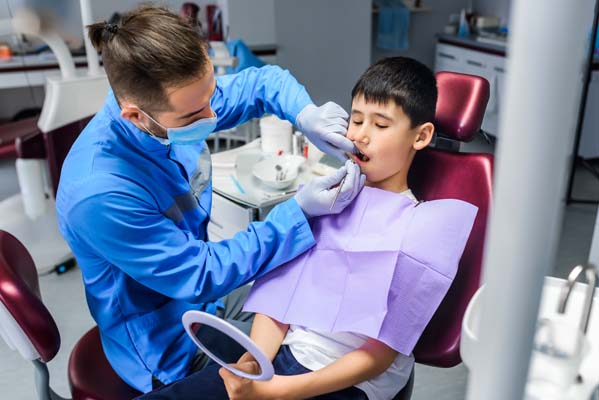Osseous surgery is a surgical periodontal treatment designed to address advanced gum disease (periodontitis). The procedure involves reshaping the bone and gum tissue around the teeth to eliminate pockets of infection, promote healing, and prevent further damage to the teeth and supporting structures. Osseous surgery restores the foundation of your smile, protecting your teeth from loss and improving overall oral health.
At Los Angeles Emergency Dentist, we specialize in advanced periodontal treatments, including osseous surgery, to ensure effective results and a comfortable patient experience.


Osseous surgery is typically recommended for patients with moderate to severe periodontitis that has not responded to non-surgical treatments like scaling and root planing (SRP). Common signs that indicate the need for osseous surgery include:
Without treatment, periodontitis can lead to tooth loss, further bone damage, and an increased risk of systemic health issues. Osseous surgery can halt the progression of gum disease and restore oral health.

At Los Angeles Emergency Dentist, we use advanced laser technology to ensure your treatment is precise, effective, and comfortable. Here’s what to expect:
1. Initial Examination and Diagnosis
2. Preparation
3. Surgical Procedure
An incision is made in the gum tissue to access the affected area.
The dentist or periodontist removes plaque, tartar, and infected tissue from the pockets.
Damaged bone is reshaped to eliminate uneven surfaces where bacteria can accumulate.
Bone grafting material may be applied if necessary to encourage bone regeneration.
The gum tissue is repositioned and sutured to fit snugly around the teeth, reducing pocket depth.
Proper aftercare is crucial to ensure successful healing and long-term results. Follow these guidelines after osseous surgery:
1. Managing Discomfort
2. Dietary Guidelines
3. Oral Hygiene
4. Activity Restrictions
Healing after osseous surgery varies depending on the severity of the condition and the extent of the procedure. Here’s a general timeline:
Initial discomfort and swelling should subside within a few days.
Gum tissue will begin to heal, and inflammation should reduce significantly.
Stitches (if used) are typically removed, and gums will start reattaching to the teeth.
Follow-up appointments are essential to monitor healing and maintain gum health.


While osseous surgery is highly effective, it’s important to contact us if you experience:
At Los Angeles Emergency Dentist, we’re here to address any concerns and provide follow-up care as needed.
At Los Angeles Emergency Dentist, we provide expert periodontal care using advanced techniques to ensure the best outcomes for our patients.

Osseous surgery is a highly effective solution for advanced gum disease, helping to restore gum health and protect your teeth. Contact Los Angeles Emergency Dentist today to learn more about this life-changing procedure.
Emergency Care Available 24/7
18740 Ventura Blvd. #108
Los Angeles, CA 91356
Reach our 24/7 patient center at 1818-614-2056 or visit us online to schedule your appointment. Let us help you achieve healthy gums and a confident smile with professional, compassionate care!
Los Angeles Emergency Dentist, Copyright © 2024. All Right Reserved.